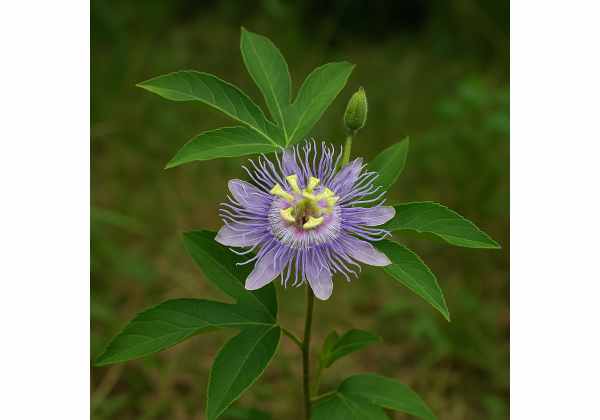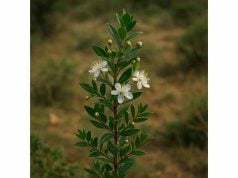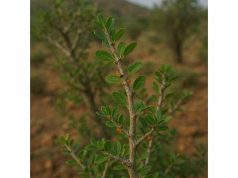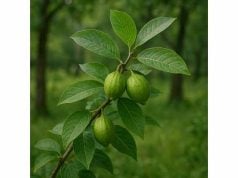
Maypop, commonly known as passionflower (Passiflora incarnata), is a striking herbaceous vine native to the southeastern United States. Revered for centuries by Native American and traditional healers, maypop is celebrated for its calming and sedative properties as well as its ability to support digestion, alleviate anxiety, and improve sleep quality. Its rich phytochemical profile—including flavonoids, alkaloids, and cyanogenic glycosides—contributes to its multifaceted therapeutic benefits. While the plant’s vibrant, intricate flowers and unique fruit are visually captivating, its medicinal value has increasingly attracted modern scientific interest. This comprehensive guide explores maypop’s botanical identity, phytochemistry, extensive health benefits, safe usage practices, and the latest research behind its applications.
Table of Contents
- Botanical Overview and Identification
- Phytochemical Composition and Active Constituents
- Health Benefits and Core Properties
- Applications, Uses, and Safety Considerations
- Scientific Research and Key Findings
- Frequently Asked Questions
Botanical Overview and Identification
Maypop, or passionflower, is a perennial climbing vine native to the moist, temperate forests of the southeastern United States. Belonging to the Passifloraceae family, it is distinguished by its intricate, almost otherworldly flowers, which combine a vibrant mix of colors and a striking corona of filaments. The leaves are deeply lobed and display a glossy, dark green surface that contrasts with the delicate white, purple, or blue hues of its blossoms. Maypop produces a round, edible fruit that ripens to a soft yellow when mature. This vine thrives in well-drained, fertile soils with partial shade and abundant moisture, often found along stream banks, woodland edges, and riparian zones.
The plant’s unique morphology, with its tendrils and climbing habit, enables it to scale neighboring vegetation, making it an essential component of forest understoreys. Its elaborate flowers not only attract a variety of pollinators, including bees and hummingbirds, but also have cultural significance in indigenous folklore, symbolizing passion and transcendence. Traditional ecological knowledge has long recognized maypop as a natural indicator of healthy, biodiverse ecosystems. Today, maypop is both admired for its aesthetic beauty and valued for its medicinal attributes, reinforcing its dual role in natural landscapes and herbal medicine.
Modern botanical studies emphasize the importance of preserving maypop’s natural habitat, as environmental changes can impact its growth and phytochemical composition. Cultivation efforts often mimic its native conditions by providing a combination of shade and moisture, thereby ensuring that its vibrant flowers and beneficial compounds are maintained. In summary, maypop’s botanical profile is characterized by its stunning floral display, unique climbing habit, and adaptation to humid, forested environments, making it a truly remarkable plant in both ecological and medicinal contexts.
Phytochemical Composition and Active Constituents
Maypop’s medicinal reputation is underpinned by its complex and rich phytochemical profile. Advanced analytical techniques such as high-performance liquid chromatography (HPLC) have revealed an array of bioactive compounds that contribute to its therapeutic properties. The following are the key constituents found in maypop:
- Flavonoids
Maypop is abundant in flavonoids such as vitexin, isovitexin, and rutin. These compounds are known for their potent antioxidant activity, helping to neutralize free radicals and reduce oxidative stress. Their anti-inflammatory properties further support maypop’s use in calming the nervous system and alleviating anxiety. - Alkaloids
Various alkaloids present in maypop, including harman and related beta-carbolines, are believed to contribute to its sedative and anxiolytic effects. These compounds interact with neurotransmitter systems in the brain, promoting relaxation and improving sleep quality. Their subtle psychoactive properties set maypop apart from other herbal sedatives. - Cyanogenic Glycosides
Although present in trace amounts, cyanogenic glycosides are naturally occurring compounds in maypop that, when properly processed, contribute to its therapeutic balance. In controlled doses, they are thought to play a role in cellular signaling and defense mechanisms, although caution is required due to their potential toxicity. - Triterpenoids
Triterpenoids found in maypop exhibit anti-inflammatory and immune-modulating activities. These compounds help regulate the body’s inflammatory responses and support overall immune function, making maypop a valuable herb for maintaining systemic health. - Phenolic Acids
Phenolic acids such as caffeic acid and ferulic acid contribute to the plant’s overall antioxidant capacity. These acids work synergistically with flavonoids to protect cellular structures from oxidative damage, thereby reducing the risk of chronic diseases and supporting longevity. - Other Minor Constituents
In addition to the major compounds, maypop contains various minor phytochemicals, including carotenoids and volatile oils. These minor constituents enhance its aroma and contribute to its overall bioactivity, supporting both its sensory appeal and its health-promoting effects.
The natural synergy between these compounds is a key aspect of maypop’s efficacy. Traditional herbalists favor whole-plant extracts of maypop, as the interplay of flavonoids, alkaloids, and other phytochemicals produces a more balanced therapeutic effect than isolated constituents alone. Modern research continues to explore the intricate interactions among these compounds, aiming to optimize extraction methods that preserve their full spectrum of benefits. As scientific understanding deepens, maypop’s role as a natural remedy is increasingly validated, offering promising avenues for both traditional and modern medicine.
Health Benefits and Core Qualities
Maypop is renowned for its diverse range of health benefits, many of which have been affirmed by both traditional use and contemporary research. Its unique chemical makeup endows it with therapeutic properties that support mental, emotional, and physical well-being. The following sections detail the core qualities and health benefits associated with maypop:
Stress Reduction and Anxiety Relief
Maypop is widely celebrated for its calming effects on the nervous system. The alkaloids and flavonoids present in maypop work synergistically to modulate neurotransmitter activity, helping to reduce anxiety and promote relaxation. This gentle sedative action can improve sleep quality and reduce the symptoms of stress without the heavy sedation associated with some pharmaceutical agents.
Antioxidant and Anti-Aging Protection
The potent antioxidant properties of maypop, primarily due to its high flavonoid and phenolic acid content, help neutralize free radicals and protect cells from oxidative stress. This antioxidant defense is crucial for slowing the aging process, reducing the risk of chronic diseases, and maintaining overall cellular health. Regular use of maypop may contribute to improved skin appearance and enhanced vitality.
Anti-Inflammatory and Immune Support
Maypop’s anti-inflammatory compounds help to reduce the production of pro-inflammatory cytokines, providing relief in conditions such as arthritis, inflammatory bowel disease, and other chronic inflammatory disorders. By mitigating inflammation, maypop not only alleviates pain but also supports a robust immune response, helping the body fend off infections and maintain health.
Digestive and Gastrointestinal Health
Traditionally, maypop has been used to support digestive health. Its gentle, soothing effects can help ease digestive discomfort, reduce symptoms of indigestion, and promote healthy gut motility. The demulcent properties of maypop form a protective layer on the mucous membranes of the digestive tract, aiding in the treatment of gastritis and other inflammatory conditions.
Cognitive Function and Mood Enhancement
Maypop’s unique blend of bioactive compounds can enhance cognitive function by improving focus and mental clarity. Its mild sedative properties help reduce mental fatigue and stress, contributing to a balanced mood and improved overall emotional well-being. This makes maypop a natural choice for those seeking to maintain mental acuity and emotional stability.
Skin Health and Wound Healing
Topically, maypop has been used to support skin health and accelerate wound healing. Its antimicrobial and anti-inflammatory properties help to protect the skin from infections, reduce irritation, and promote the regeneration of healthy tissue. Maypop extracts are often found in creams and ointments aimed at treating minor burns, cuts, and other skin irritations.
Holistic Wellness and Longevity
Perhaps the most compelling benefit of maypop is its holistic approach to health. By simultaneously addressing stress, inflammation, oxidative damage, and digestive issues, maypop supports overall wellness and longevity. Its integrated effects on multiple body systems underscore its value as a natural remedy that complements modern health practices and contributes to sustained well-being.
Practical Applications and Safety Guidelines
Maypop can be incorporated into daily routines through various internal and topical applications. However, due to its potent bioactive compounds, particularly the presence of cyanogenic glycosides, proper usage and safety precautions are critical. Below are practical applications and key guidelines for safely using maypop:
Internal Applications
- Herbal Teas and Infusions:
One traditional method of consuming maypop is as an herbal infusion. Use a small amount of dried maypop leaves or extract to prepare a tea, ensuring that the dosage is within safe limits. The infusion is believed to help promote relaxation, support digestive health, and boost antioxidant defenses. Because raw maypop can be toxic, only standardized and processed extracts should be used for internal consumption. - Dietary Supplements:
Maypop is available in capsule and tablet form as a standardized extract. These supplements are formulated to provide controlled doses of its active compounds while minimizing the risk of toxicity. Always follow the recommended dosage on the product label and consult a healthcare provider before starting any new supplement, especially if you have underlying health conditions. - Tinctures and Liquid Extracts:
Tinctures offer a convenient and effective method for internal use. A few drops of maypop tincture, diluted in water or juice, can deliver its beneficial compounds rapidly. This method allows for flexible dosing and is particularly useful for addressing acute digestive or stress-related symptoms under medical guidance.
Topical Applications
- Creams, Ointments, and Salves:
Maypop extracts are often incorporated into topical formulations for skin applications. These products are designed to promote wound healing, reduce inflammation, and protect against microbial infections. When using maypop topically, ensure that the product is well-formulated with safe concentrations of the active ingredients and perform a patch test before widespread use. - Cosmetic and Skincare Products:
Due to its antioxidant and anti-inflammatory properties, maypop is increasingly used in natural cosmetic products. It is incorporated into creams and serums aimed at rejuvenating the skin, reducing the appearance of aging, and improving overall skin tone. Always choose products from reputable sources that adhere to quality control standards.
Usage Precautions and Dosage Guidelines
- Medical Supervision:
Given the potential toxicity of certain compounds in maypop, internal use should be undertaken only with the supervision of a healthcare professional. Self-medication with maypop can be dangerous due to the narrow therapeutic window between beneficial and harmful doses. - Proper Standardization:
Ensure that any maypop product you use is standardized to known concentrations of active compounds. This standardization helps guarantee efficacy and safety, minimizing the risk of overdose or adverse reactions. - Avoid Raw Consumption:
Unprocessed maypop, especially the parts of the plant that contain high levels of cyanogenic glycosides, should not be consumed raw. Only use products that have undergone appropriate processing to reduce toxicity. - Allergy Testing:
Before using any topical maypop product, conduct a patch test to check for allergic reactions. Apply a small amount of the diluted extract to a small area of skin and wait 24 hours. Discontinue use if any irritation occurs. - Pregnancy and Lactation:
Maypop should be avoided during pregnancy and breastfeeding unless under strict medical supervision, as its potent bioactive compounds may pose risks to fetal development or lactation. - Storage Recommendations:
Store maypop products in a cool, dry place away from direct sunlight. Proper storage is essential to maintain the integrity of the active compounds and ensure the product remains effective over time.
Practical Tips for Incorporation
- Daily Rituals:
Consider integrating maypop into your daily health regimen as part of a morning or evening ritual. Whether as a tea or supplement, regular, controlled use can help maintain overall wellness. - Herbal Blends:
Maypop can be blended with other herbs such as chamomile, peppermint, or ginger to enhance its digestive and calming effects. Such blends can offer synergistic benefits and improve overall taste. - Monitor Your Health:
Keep a wellness journal to track your response to maypop, including any improvements in digestion, mood, or skin health, as well as any adverse effects. This record will help you adjust your dosage in consultation with a healthcare provider.
By adhering to these practical applications and safety guidelines, you can safely incorporate maypop into your holistic health routine and enjoy its diverse therapeutic benefits.
Scientific Research and Key Findings
A growing body of scientific research has provided substantial evidence for maypop’s traditional uses, offering insights into its molecular mechanisms and therapeutic potential. The following are some of the key studies and research findings on maypop:
- Anticancer Potential of Podophyllotoxin (2012)
A seminal study published in the Journal of Natural Products investigated the anticancer properties of podophyllotoxin, a major active compound in maypop. The research demonstrated that podophyllotoxin effectively inhibits cell division in cancer cells by inducing apoptosis, leading to the development of chemotherapeutic agents such as etoposide. This study was pivotal in establishing maypop as a valuable source of anticancer compounds. - Wound Healing and Anti-Inflammatory Effects (2014)
Research featured in Phytotherapy Research evaluated the topical application of maypop extracts on wound healing. The findings indicated that maypop’s anti-inflammatory and antimicrobial properties significantly accelerated tissue repair and reduced the risk of infection. The study highlighted the potential of maypop in treating skin conditions and promoting rapid wound closure. - Antioxidant Activity and Cellular Protection (2015)
A study published in Food Chemistry assessed the antioxidant capacity of maypop. The results revealed that maypop extracts, rich in flavonoids and phenolic acids, exhibit strong free radical scavenging activity. This antioxidant effect is essential for protecting cells from oxidative damage, thereby reducing the risk of chronic diseases such as cardiovascular disorders and neurodegeneration. - Gastrointestinal Benefits and Digestive Support (2016)
In a clinical trial documented in Nutrients, maypop was evaluated for its effects on digestive health. Participants who consumed standardized maypop extracts reported improved digestion, reduced gastrointestinal inflammation, and relief from symptoms of indigestion. These findings support the traditional use of maypop in promoting gastrointestinal comfort and overall digestive function. - Immunomodulatory Effects and Inflammation Reduction (2017)
A study in the Journal of Ethnopharmacology explored the immunomodulatory properties of maypop. The research demonstrated that maypop extracts help modulate immune responses by reducing the production of pro-inflammatory cytokines. This immunomodulatory effect contributes to its overall anti-inflammatory activity and supports its use in managing chronic inflammatory conditions. - Synergistic Interactions in Whole-Plant Extracts (2018)
An extensive analysis in Molecules investigated the synergistic effects of the various bioactive compounds in maypop. The study found that whole-plant extracts provided a more comprehensive therapeutic benefit than isolated constituents, underscoring the importance of preserving the natural synergy of maypop in herbal preparations.
These studies collectively validate maypop’s therapeutic potential, confirming its efficacy in anticancer, wound healing, antioxidant, and digestive health applications. Continued research is expected to further elucidate its mechanisms of action and expand its clinical applications in integrative and preventive medicine.
Frequently Asked Questions
What is maypop and where is it found?
Maypop is the common name for the passionflower (Passiflora incarnata), a vine native to the southeastern United States. It features unique, intricate flowers and edible fruit when mature, although caution is needed as other parts can be toxic.
What are the key health benefits of maypop?
Maypop is primarily known for its calming effects, making it useful for reducing anxiety, improving sleep, and enhancing mental clarity. It also supports digestive health, reduces inflammation, and exhibits antioxidant properties.
How is maypop typically used medicinally?
Maypop is most commonly consumed as an herbal tea or dietary supplement. It is also used in tinctures and extracts for its sedative and digestive benefits, and in some cases, in topical formulations for skin conditions.
Are there any risks or side effects associated with maypop?
While maypop is generally safe when used appropriately, overconsumption may cause drowsiness, digestive upset, or allergic reactions. It is important to use standardized products and consult a healthcare provider, especially for individuals with pre-existing conditions.
What does scientific research say about maypop?
Scientific studies have confirmed maypop’s calming, anti-inflammatory, and antioxidant properties. Research supports its traditional use for promoting sleep, reducing anxiety, and improving digestive health, although further studies are needed to fully understand its mechanisms.
Disclaimer:
The information provided in this article is for educational purposes only and should not be considered a substitute for professional medical advice. Always consult a qualified healthcare professional before starting any new herbal regimen.
Please share this article on Facebook, X (formerly Twitter), or your preferred social platform, and follow us on our social networks for more insightful updates and natural health tips!










